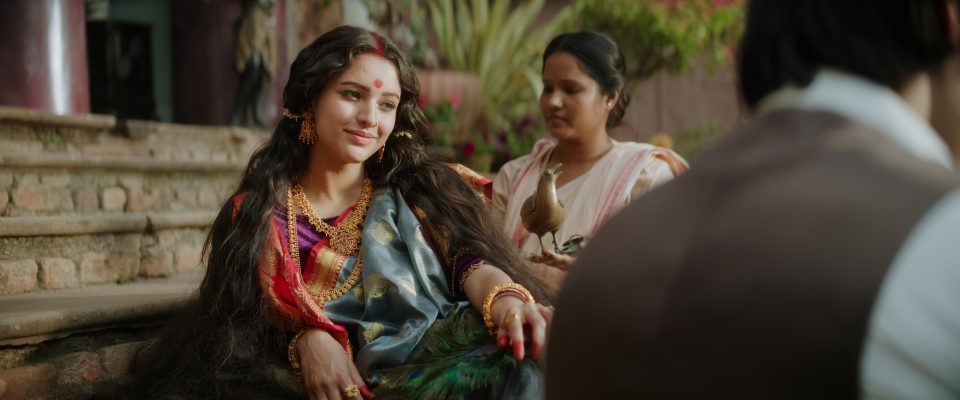The Horror, History and Power of ‘Bulbbul’
The cast and crew of the film on repurposing an age-old nightmare for a modern-day clarion call
*This piece contains spoilers for the film ‘Bulbbul’
“I’ve always been delighted by fairy tales in the true sense of the word; fairy tales with teeth,” says Anvita Dutt. Set at the turn of the 19th century in Bengal, the director-writer’s latest feature Bulbbul is a supernatural thriller with a subversive mandate. The Netflix film takes the old yarn about women and witchcraft and spins it into a rich tapestry of timeless horror; a powerful portrait of trauma and agency that’s reminiscent of a looking glass into the present. When monsters lurk both outside and within—Bulbbul is the chilling clarion call.
Tracing the footsteps of the eponymous character (played by Tripti Dimri), Dutt’s directorial debut melds her penchant for fantasy with deception. While 2017’s Phillauri (for which Dutt wrote the screenplay) explored a spectral love story within alternative history and 2018’s Pari (for which Dutt wrote the dialogue) inverted the lens on humanity and demons, Bulbbul borrows from feminist canon to chronicle a child-bride’s magical story of coming of age. In a village beset with a spate of mysterious deaths, the return of a family member (Avinash Tiwary as Satya) heralds a witch hunt, implicating a centuries-old chudail (witch) once alive only in Bulbbul’s bedtime stories. The line between evil and divine then blurs as Bulbbul’s past and present chart an uneasy history; resulting in a reckoning that’s been 20 years in the making.

(Left) The director-writer of ‘Bulbbul’—Anvita Dutt. (Right) Ruchi Mahajan as Bulbbul in ‘Bulbbul.’ Photo: Netflix
Dutt was drawn to a time almost a century ago because she wanted Bulbbul to feel unearthly; “a world that would have mysticism and myths as an everyday part of the fabric,” she says. Informed by the Palladian aesthetics of neoclassical architecture, the vermilion color palettes of Bengal as well as celebrated artist Raja Ravi Varma’s fusion paintings, Dutt’s story first found grounding in the evocative details of the period, rife with arts and revolution. The director-writer’s allure with Indian folk stories, particularly the writings of Rabindranath Tagore and Sarat Chandra Chattopadhyay coupled with the classic canon of Thakurmar Jhuli by Dakshinaranjan Mitra Majumder, were also incendiary to Dutt’s spark of Bulbbul and her Bengal. An ardent reader of the works of fantasy, horror and sci-fi authors Neil Gaiman, Ursula Le Guin, Terry Pratchett and Stephen King, Dutt then instinctively knew she was going to weave Bulbbul as a fantastical tale. In spite of the intricately sketched out setting, Dutt maintains this story could exist anywhere; beholden to a protagonist transcendent and representative of the universal feelings of freedom and fear. “It could have been underwater, but Bulbbul’s story would still remain Bulbbul’s story,” she says.
Dimri’s Bulbbul is a duality of two divides, the cradle of the goddess and the cauldron of the witch. Birthed by a life of control and violence, Dutt poses Bulbbul, whether intentionally or inadvertently, as a figure up for debate. Blessed by Kali and christened the chudail, how do we view a woman taking her fate into her own hands?
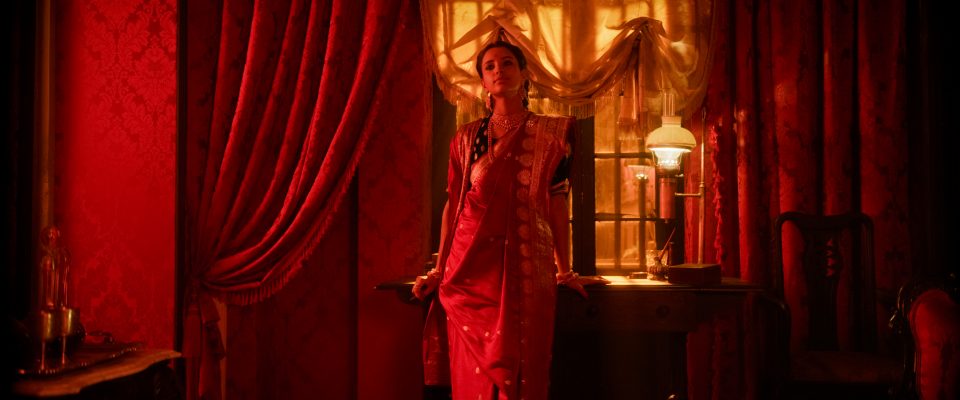
Tripti Dimri in and as ‘Bulbbul.’ Photo: Netflix
Navigating her roles as Bulbbul and the chudail required Dimri to connect with her inner self. Before she could enter workshops with her co-actors, Dimri first spent two months with Dutt unraveling the workings of Bulbbul’s mind; visiting the nimble footsteps of Bulbbul as a dauntless child before growing into a powerful thakurain (landowner) of devilish intrigue. The actor states a charting of similarities as the key exercise that helped her bridge the motives of her characters. “I am very close to the Bulbbul who is innocent. It was easy for me to understand her mental state. The challenging part was to understand the transformed Bulbbul’s world,” says Dimri. Focusing on her breath, the actor indulged a part of herself at peace with her whole and disconnected from immediate reality every time she played the witch; Bulbbul’s wicked brilliance unleashed in a form of her choosing. “It was a strange but very useful exercise to understand the chudail’s world. It was the most difficult thing I’ve had to do for a film,” she says.
Toeing the line between vigilantism and subversion, Dutt pokes holes into a millennia’s web of social conditioning through Bulbbul. The director-writer even plays with sonic and visual motifs to upend the perception of good and evil in the film. Bulbbul’s female characters channel the ululudhvani; the lilting ululation that rings out during celebrations; it’s purpose to ward off evil. The film interestingly employs the sound in two particular scenes: one, wherein Bulbbul is a child marrying an older thakur (landowner) Indranil (Rahul Bose) and two, in the film’s final scene wherein she reveals herself as the fabled chudail to her abusive husband. Dutt views the motif as the ultimate clarion call in Bulbbul. “It’s an eerie sound saying ‘’back off’ to what is not good and should stay away from you; that you are safe in the sound. It is also a warning. You think that the warning is to protect you from evil but it could also be a warning to you. Like ‘Hey buddy, you are crossing the line here. You are in danger now because you thought it is your birthright to inflict pain on someone and you think you can get away with it’,” says Dutt. Underlining the ululudhvani, the director-writer also maintains that it’s symbolic of her protagonist Bulbbul’s avatars. “It was about welcoming the bride, whichever form she takes,” says Dutt.
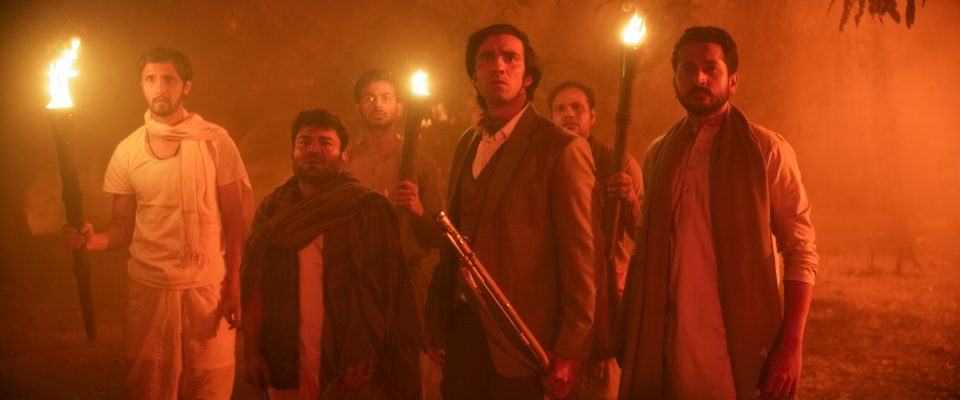
Avinash Tiwary as Satya and Parambrata Chattopadhyay as Sudip in ‘Bulbbul.’ Photo: Netflix
In the visual plane, Dutt and cinematographer Siddharth Diwan drench Bulbbul in hues of red and yellow, heralding a reckoning of fire and blood in the film’s most revelatory scenes. They set up a colorful smokescreen and invite viewers to discern the difference between good and evil. “Both the ululating and the colors, I would say are not just art for art’s sake. I hope it is perceived as something beautiful and evocative, but it is actually an inherent part of the story and storytelling,” says Dutt.
The inescapable horror of Bulbbul indisputably lies in its characters’ trauma; the bloody disciplining that is meted out in Indranil’s manor and the retribution that strings justice in corpses after. Interestingly, Dimri is not the only actor playing two roles in the film. Bose too joins Dimri in essaying two characters: one, the authoritative Indranil and the other, Mahendra—his twin brother with a mental illness. Linked by a bond of obligation and control, the two characters are principal aggressors in Bulbbul and Bose underlines an important dynamic of power between the twins.
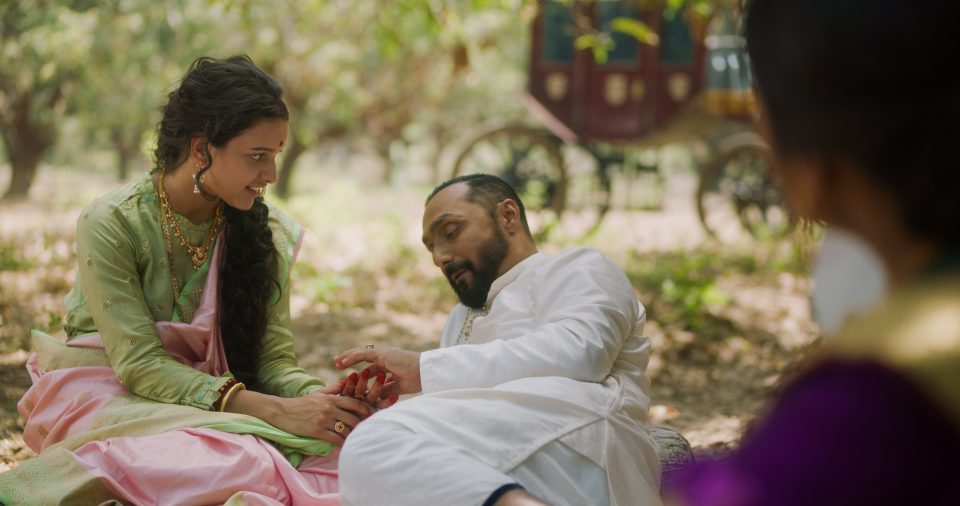
Tripti Dimri as Bulbbul and Rahul Bose as Mahendra in ‘Bulbbul.’ Photo: Netflix
“You get the first warning of what could happen in the beginning of the film, when Mahendra comes to the child bride and says, ‘Gudiya, khelo (Doll, let’s play)’ and Indranil comes in and says, ‘Mahendra,’ in a reprimand (saying) that you know, you should not be here, what are you doing here? And if at all, there is a warning bell sounded by the director, it is then—that this guy needs to be kept in control and the only person to do it is the elder brother,” says Bose.
Indranil commits an act of physical violence and Mahendra commits an act of sexual violence; both hold positions that allow their deeds to go unchecked. Bose thinks their motives and consciences to be poles apart, delving into how he and Dutt approached charting a character with a mental illness, who also commits a crime. “The one (condition) that we arrived at (for Mahendra) was one of arrested development, that he is a child in his head and his behavior, but he’s grown into this 40-year-old man and zamindar. Even though it might take the form of the tantrum of a child, he gets exactly what he wants, whenever he wants it. He’s never been told that there are some things you can and cannot do. So when he asks, Bulbbul to khelo (play) when she’s suffering on the bed after having been beaten and her feet have been broken by Indranil, he can’t understand why she’s not playing,” he says.
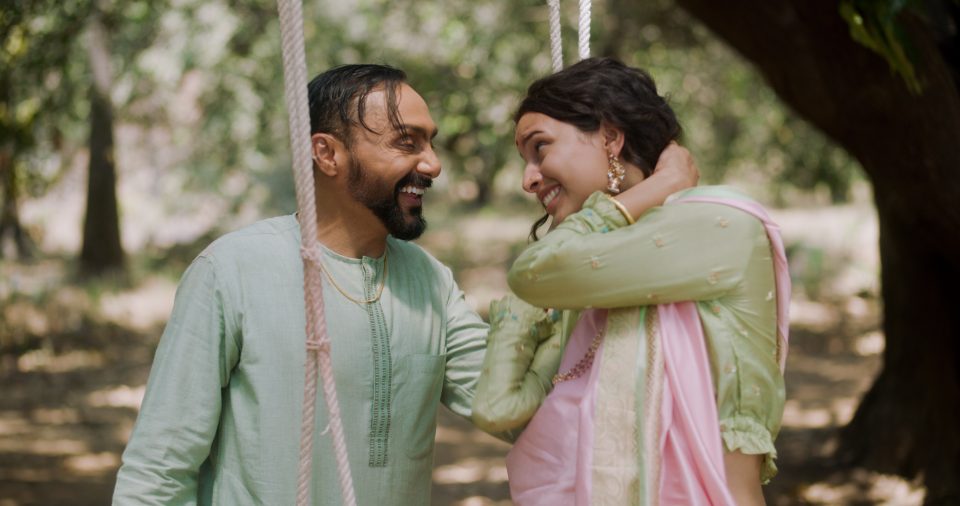
Rahul Bose as Mahendra and Tripti Dimri as Bulbbul in ‘Bulbbul.’ Photo: Netflix
Bose doesn’t condone his character’s violence, relaying how he and Dutt mapped Mahendra’s delayed cognizance in light of his state of mind and friendship with Bulbbul. “Only after he realizes that she’s (Bulbbul) lifeless, does he figure that something has gone very wrong. And bells ring deep within his psyche, like it would with a child—that there’s something very wrong, that Gudiya (Bulbbul) is not moving anymore, she’s not playing anymore. The tragedy is that he actually is deeply fond of and devoted to her. She’s the only person who treats him with any real affection. So it’s a very, very sad moment. It breaks him because in his own head, he can’t process that. He’s lost his only friend,” he says.
Dutt, in turn, also views the twin brothers’ dynamic as representative of the hegemonies and fallout of patriarchy. About how she wanted the film’s arcs of trauma and consequence to play out, the director says, “Bulbbul’s struggle is in a time period where there are thresholds and boundaries set for her. Everyone else other than her seems to be in a position of perceived power. Both Indranil and Mahendra have a sense of entitlement over Bulbbul; for them, no rules exist. We had a lot of discussions on which would be the right pitch where we are doing justice to the story and the character—without hopefully harming either.”
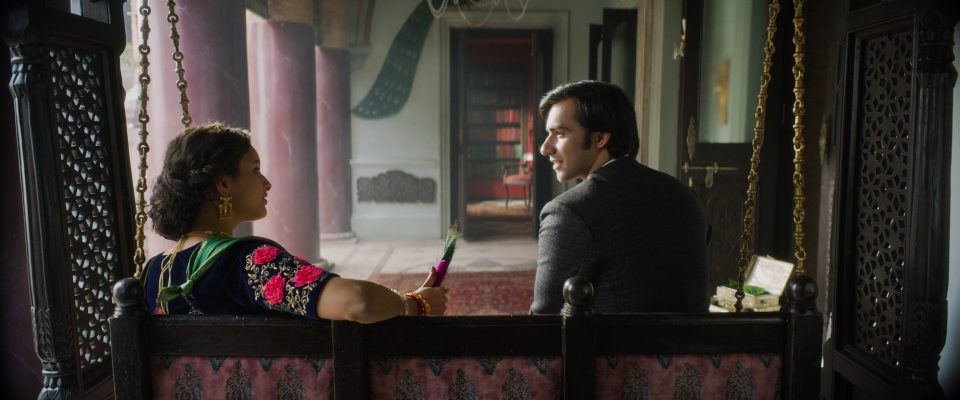
Tripti Dimri as Bulbbul and Avinash Tiwary as Satya in ‘Bulbbul.’ Photo: Netflix
Steeped in lore, the film is a deceptive melding of history, fantasy and horror, spinning the ingrained on tradition’s discus to subvert beliefs with distinctive flair. Whether toe rings on twisted feet, midnight wind rustling through stalks of wheat or the haunting cry of the ululudhvani, nothing in Bulbbul is what it seems. In posing the savior as an entity of reverence and blasphemy, Dutt also does away with rationale, ushering in layered discourse instead. Her chudail is both a silhouette of fairytale and terror, and Bulbbul emerges triumphant, upending notions of monsters as well as men.
The director reveals she didn’t want to go the route of on-the-nose messaging with Bulbbul. Like a kehanni (storyteller) weaving realities as old as time itself, she imagined the tale drawing people to the bonfire, her psyche opening the doorway to urgent, reimagined retellings. “These are things that move me and therefore they move the story ahead, but at the heart of it, it is just a yarn. If the tale speaks to you, so will the message,” says Dutt. She adds, “I want the shadows to creep closer to you when I tell you the story; I want you to listen attentively. That is all.”



